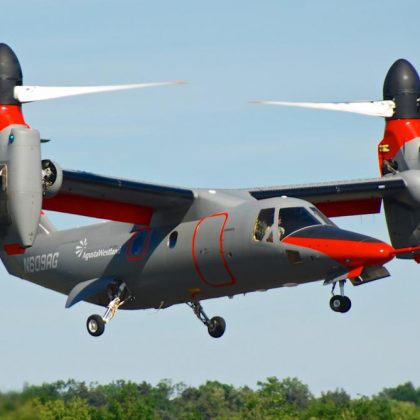Stability criteria of Samara-like decelerator in unsteady transitions
The Aeronautical Journal June 2023 Vol 127 No 1312
Samaras, or better known as “helicopter seeds”, are common childhood memories of many people. Behind the simplicity of a planar wing and a seed, is a complex mystery of flight mechanics. In the past hundred years, many distinguished researchers have explored the performance and aerodynamic properties of Samaras in steady autorotations. As early as 1947, a commercial advertisement had presented the idea of using artificial Samaras to deliver cargos. However, the quantitative understanding of transitions from the start of dropping to the steady autorotation, to the authors’ knowledge, had never been fully understood. Perhaps due to this reason, practical utilizations of artificial Samaras are scarce.
The work described in this paper presents theoretical and experimental investigations to derive a quantitative parameter measuring the stability of unsteady transitions, which is a mathematical description of how likely a bio-inspired Samaras could successfully autorotate from a static drop (defined as stable if the transition is successful). The non-dimensional parameter along with other criteria related to the initial conditions of drops are proposed and are in accord with experiments.
It has been discovered that the inertial properties of Samaras play vital roles to achieve stable transitions. The direction of the eigenvector with the minimum moment of inertia (MOI) is particularly important to affect the transitions. Inspired by this observation, a carefully designed apparatus was made to be able to independently adjust the MOI without changing the location of the center of mass. By sweeping through a spectrum of mass distributions, the results showed a pattern that for a certain range of MOI of the intermediate axis over the axis with the minimum MOI in the principal coordinate, successful transitions can be guaranteed.
The discovery along with the understanding of Samaras’s kinematics and aerodynamics in the steady state, leads to a clear picture of the principles of Samara dynamics, which provides important clues in understanding the transitions when the azimuthal rotation is not pronounced, and forms the physical basis of the non-dimensional parameter called Inertial Stability Criterion (ISC). In the nutshell, torques have to be supplied to each axis in the principal frame to initiate and maintain azimuthal autorotation. ISC describes the boundary of the minimum acceptable ratio of excitations on the intermediate axis and the axis with the minimum MOI to achieve guaranteed-stable transitions.
During the experiments, it was also found that the directions of autorotation can be changed by simply changing the mass distribution, provided other factors such as the center of mass remain unchanged. The bifurcation is due to the fact that the wing is essentially a symmetric flat plate, and the change of the mass distribution shifts the relative magnitude of excitations. When crossing the bifurcation point, a new equilibrium is formed, reflected by the change in the direction of autorotation. ISC can be used to predict the direction of autorotation. It is done by simply calculating ISC in different autorotating directions and finding the one with the minimum absolute value.
Using ISC, the model can successfully predict the stability in transition and the direction of autorotation. It is hoped that this quantitative parameter can facilitate engineering development of Samara-like decelerators. Besides cargo delivery, applications such as planetary entry-descent-and-landing vehicles or probes are potential uses of the technology. Based on this model, a cargo delivery system has been developed, capable of carrying payloads dropped from drones or crewed aircraft.
Stability criteria of Samara-like decelerator in unsteady transitions, Wang, H., & Breidenthal, R. (2023). This research paper appears in Volume 127 – Issue 1312 – June 2023 of The Aeronautical Journal.

The Royal Aeronautical Society is the world’s only professional body dedicated to the entire aerospace community. Established in 1866 to further the art, science and engineering of aeronautics, the Society has been at the forefront of developments ever since.
www.aerosociety.com | National Aerospace Library catalogue & e-books
Book reviews covering academic, scientific and technical books covering aeronautical engineering and topics relating to it can be found here. www.aerosociety.com/news-expertise/national-aerospace-library/book-reviews





